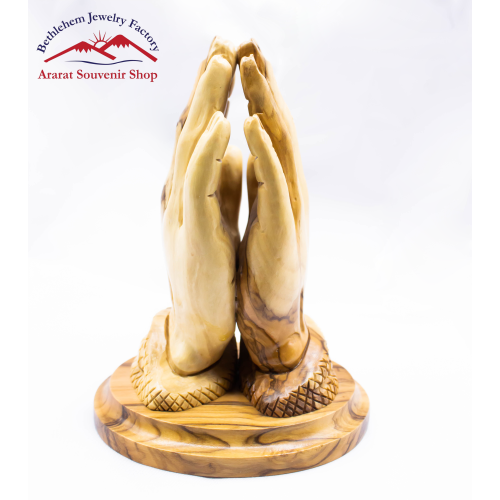Grotto
The Milk Grotto, located just outside Bethlehem, is a site of profound spiritual significance and reverence within the Christian tradition, particularly pertaining to the early life of Jesus and the Holy Family. Nestled in a cave-like setting, this sacred site is believed to have been the place where Mary nursed Jesus shortly after his birth. The grotto’s history and its connection to the Nativity narrative enrich the spiritual tapestry of Bethlehem, drawing pilgrims from around the world seeking solace, reflection, and deeper faith.
According to tradition, as Mary fed Jesus in the grotto, she inadvertently spilled some of her milk on the ground. Miraculously, the rock of the grotto turned white, symbolizing purity and motherhood. This transformation has led to the belief that the Milk Grotto possesses special properties, becoming associated with fertility, motherhood, and nurturing. For centuries, women seeking to conceive or struggling with motherhood have visited the site, offering prayers and leaving tokens of hope. The grotto thus embodies the universal themes of maternal love and grace, resonating deeply with both personal and communal aspects of faith.
Archaeologically, the Milk Grotto is an intriguing blend of ancient history and sacred lore. Its walls are composed of a soft, chalky limestone, and the cave showcases elements characteristic of early Christian worship spaces. These features hint at centuries of devotion and reverence, with remnants of early Christian art and inscriptions adorning its surfaces. The site offers visitors a tangible connection to the past, allowing them to tread the same ground that Mary and Jesus may have walked, linking present faith with historical roots.
The Milk Grotto stands in contrast to the bustling atmosphere of Bethlehem, with its crowded markets and the nearby Church of the Nativity. As pilgrims approach the grotto, they often find a sense of peace and tranquility enveloping the area. The simplicity of the grotto, carved from the earth, serves as a reminder of the humble beginnings of Jesus’ life and the sacredness of ordinary moments. This juxtaposition of the sacred and the mundane encourages reflection on how divine presence can be found in the simplest of settings.
The devotion associated with the Milk Grotto has manifested in various traditions and practices. Catholic and Orthodox communities particularly venerate the site, celebrating the feast of the Holy Family and linking it to the themes of childhood and maternal care. The grotto also serves as a focal point for personal retreats, where mothers and fathers alike come to pray for their children or seek comfort in their parenting journeys. The act of lighting candles, offering prayers, or simply sitting quietly in contemplation enhances the sense of connection to the divine, creating an atmosphere ripe for spiritual renewal.
Moreover, the Milk Grotto is seen as a space for communal prayer and connection. Many local churches actively organize pilgrimages to the site, fostering a sense of togetherness among the faithful. This aspect emboldens the idea that faith is not solely an individual journey but rather a communal endeavor where believers draw strength from one another. The grotto has become a sacred place where prayers can be lifted collectively, uniting people in their hopes and struggles, much like Mary’s own experience of motherhood, which links all women in shared humanity.
The sanctity of the Milk Grotto is further enhanced by its location near the ancient routes of pilgrimage that have existed for centuries. The site’s presence within a region steeped in biblical history makes it an essential stop for those retracing the life of Jesus and the narrative of salvation. In this way, the Milk Grotto is intertwined not only with the story of Jesus and his family but also with the broader tapestry of faith that continues to flourish within the Christian community.
Visitors to the Milk Grotto often leave with more than just a memory; they carry with them a sense of hope, renewal, and connectedness. Many remark on the palpable feeling of peace that permeates the site, finding it an ideal place for personal reflection and prayer. As they kneel in the grotto, they are reminded of the importance of nurturing their faith, values, and the relationships they share, much like Mary nurtured her Son.
In contemporary times, the Milk Grotto continues to attract pilgrims, despite the challenges faced by the region. The persistence of faith amidst adversity showcases how deeply rooted beliefs can inspire individuals to seek peace and solace. Many believe that visiting the grotto brings blessings not only to individuals but also to families, communities, and the broader world.
In conclusion, the Milk Grotto in Bethlehem is more than just a historical site; it is a deeply spiritual destination woven into the fabric of Christian faith and devotion. The connections to the infancy of Christ, the symbolism of motherhood, and the call to communal prayer create a rich spiritual experience for all who visit. Through its serene environment and sacred history, the Milk Grotto invites reflection on love, resilience, and the nurturing aspects of faith. As a tangible link to the Nativity story, it serves as a reminder that the divine can be found in the most profound and ordinary experiences of life. In this sacred space, believers are invited to draw nearer to Christ, encounter the gifts of grace, and embrace the themes of hope and love that resonate across generations.











Reviews
There are no reviews yet.